- 本月热门
-
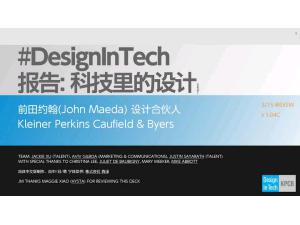 DesignInTec:科技里的设计(当设计师参与创业) by 前田约翰
DesignInTec:科技里的设计(当设计师参与创业) by 前田约翰 -
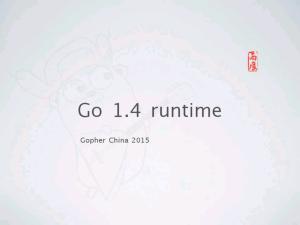 Go语言内存、垃圾回收、协程简介(1.4 runtime 运行环境) by 雨痕
Go语言内存、垃圾回收、协程简介(1.4 runtime 运行环境) by 雨痕 -
 AngularJS the performance parts(AngularJS性能:过去现在和未来) by toddmotto
AngularJS the performance parts(AngularJS性能:过去现在和未来) by toddmotto -
 HTTP1.1 vs HTTP2 a performance analysis(HTTP2比HTTP1性能提高66%) by mozilla
HTTP1.1 vs HTTP2 a performance analysis(HTTP2比HTTP1性能提高66%) by mozilla -
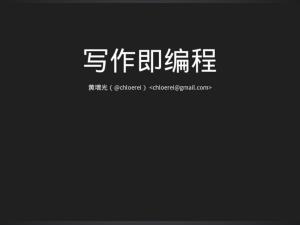 写作即编程(Markdown标记语言简介及使用教程) by 黄增光
写作即编程(Markdown标记语言简介及使用教程) by 黄增光 -
 How To Shot Web(如何攻破网站) by Jason Haddix
How To Shot Web(如何攻破网站) by Jason Haddix -
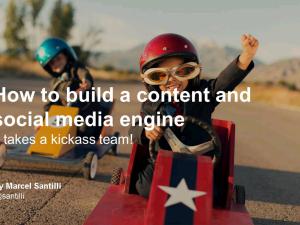 How to build a content and social media engine[如何构建内容和社交媒体营销引擎] by by Marcel Santilli
How to build a content and social media engine[如何构建内容和社交媒体营销引擎] by by Marcel Santilli -
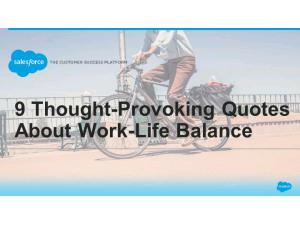 9 Thought-Provoking Quotes About Work-Life Balance(9个发人深省的关于工作生活平衡的名言) by SalesForce
9 Thought-Provoking Quotes About Work-Life Balance(9个发人深省的关于工作生活平衡的名言) by SalesForce -
 MongoDB and the Internet of Things(MongoDB和物联网) by Chris Biow
MongoDB and the Internet of Things(MongoDB和物联网) by Chris Biow -
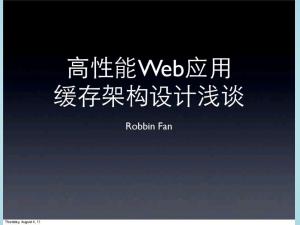 高性能Web应用缓存架构设计浅谈 by Robbin Fan
高性能Web应用缓存架构设计浅谈 by Robbin Fan
加收藏
8 Things Uber Can Teach You Essential lessons in product design(关于产品设计Uber可以教你的八件事)@theappbusiness
第1页
Join the conversation twitter.com/theappbusiness
8 Things Uber Can Teach You
Essential lessons in product design
© 2015 The App Business
8 Things Uber Can Teach You
Essential lessons in product design
© 2015 The App Business
第2页
“In the past, modifying people's behaviour meant advertising. Today, companies can change behaviour through incredible user experience.”*
Uber can be thought of as the ultimate ‘habit-forming’ service. The experience is often so good, that after your first ride, you’ll probably never go back to using a regular taxi again.
Uber didn’t do this by changing the vehicle or retraining drivers. Instead, it built an app that fundamentally changed how we order, meet, and pay for a car.
By taking a broader view of what a car service could be, Uber was able to totally reimagine the entire experience - offering relentless reliability and a seamless system that addressed many of the issues that plagued the ‘analogue’ taxi experience.
* Nir Eyal, Author of Hooked: How to Build Habit-Forming Products
© 2015 The App Business
Uber can be thought of as the ultimate ‘habit-forming’ service. The experience is often so good, that after your first ride, you’ll probably never go back to using a regular taxi again.
Uber didn’t do this by changing the vehicle or retraining drivers. Instead, it built an app that fundamentally changed how we order, meet, and pay for a car.
By taking a broader view of what a car service could be, Uber was able to totally reimagine the entire experience - offering relentless reliability and a seamless system that addressed many of the issues that plagued the ‘analogue’ taxi experience.
* Nir Eyal, Author of Hooked: How to Build Habit-Forming Products
© 2015 The App Business
第3页
01
Attract new users, and get them smoothly through the gate.
© 2015 The App Business
Attract new users, and get them smoothly through the gate.
© 2015 The App Business
第4页
Uber sets the benchmark for friction-free onboarding. Every step in the process has been painstakingly considered - and streamlined further - to make it as quick and painless as possible for the user.
Connecting through a Facebook account (top right), for example, saves time during onboarding by automatically filling in otherwise tedious information fields. Payment details are captured in a similarly easy fashion: just hold your debit/credit card in front of your camera. The app reads the numbers and inputs the information automatically without requiring the user to do anything further (bottom right). Once your personal and payment details are in, you are good to go - Uber won’t trouble you for the information again. The hassle of payment just ‘disappears’ from the experience altogether.
© 2015 The App Business
Connecting through a Facebook account (top right), for example, saves time during onboarding by automatically filling in otherwise tedious information fields. Payment details are captured in a similarly easy fashion: just hold your debit/credit card in front of your camera. The app reads the numbers and inputs the information automatically without requiring the user to do anything further (bottom right). Once your personal and payment details are in, you are good to go - Uber won’t trouble you for the information again. The hassle of payment just ‘disappears’ from the experience altogether.
© 2015 The App Business
第5页
Perhaps one of the reasons Uber has been able to grow its user base so astronomically is due to its clever and strategic use of incentives.
The beauty of this process is that loyal customers become highly effective salespeople. The individual in return gets a reward, namely more credit on their account, whenever someone new in their network uses their unique code and takes their ride. The more influence you have, the more credit you earn. It’s a win-win and a mutually beneficial bargain. Like everything Uber does, the process of referral is designed to be incredibly easy. There are no big forms to fill out, slow webpages to wait on or any need to switch from your phone to your desktop - everything can be done within the app. They even provide users with the choice to send out invites via email, social media or text message.
© 2015 The App Business
The beauty of this process is that loyal customers become highly effective salespeople. The individual in return gets a reward, namely more credit on their account, whenever someone new in their network uses their unique code and takes their ride. The more influence you have, the more credit you earn. It’s a win-win and a mutually beneficial bargain. Like everything Uber does, the process of referral is designed to be incredibly easy. There are no big forms to fill out, slow webpages to wait on or any need to switch from your phone to your desktop - everything can be done within the app. They even provide users with the choice to send out invites via email, social media or text message.
© 2015 The App Business
第6页
02
Make it so simple, even a first-timer ‘knows’ what to do next.
© 2015 The App Business
Make it so simple, even a first-timer ‘knows’ what to do next.
© 2015 The App Business
第7页
Uber’s user interface (UI) is so simple and intuitive that it doesn’t need to ‘teach’ new users how to operate the app. It’s obvious.
At the core of the app is a map with the user’s location at the centre. Available drivers roam around them, and the entire booking process happens seamlessly on just one screen. It all adds up to an incredibly simple experience that allows even the most inexperienced user to feel confident and in control at every stage. Colour is used strategically and the most important elements stand out from everything else on the screen. The black buttons are impossible to miss and encourage users to tap on them to proceed with their booking.
© 2015 The App Business
At the core of the app is a map with the user’s location at the centre. Available drivers roam around them, and the entire booking process happens seamlessly on just one screen. It all adds up to an incredibly simple experience that allows even the most inexperienced user to feel confident and in control at every stage. Colour is used strategically and the most important elements stand out from everything else on the screen. The black buttons are impossible to miss and encourage users to tap on them to proceed with their booking.
© 2015 The App Business
第8页
03
Require only the bare minimum for a user to achieve their goal.
© 2015 The App Business
Require only the bare minimum for a user to achieve their goal.
© 2015 The App Business
第9页
Uber is a great blueprint for design thinking. They have nailed the critical question: “What is the least amount of work a user has to do, to achieve their desired outcome?”
Stripping the process of booking a car to its bare essentials, there are just three simple interactions a user needs to fulfil their needs:
1. Set pickup location 2. Select type of vehicle 3. Request driver
And at every step, Uber has once again painstakingly considered how they could make the experience as fast and effortless as possible. Upon opening the app, users can immediately see the available cars nearby, the pickup location automatically centres on their current location and the previously used vehicle is set as default.
In most cases, the entire process can be completed in just two taps and this is even further refined to just one single interaction with wearables like the Apple Watch, shown right.
© 2015 The App Business
Stripping the process of booking a car to its bare essentials, there are just three simple interactions a user needs to fulfil their needs:
1. Set pickup location 2. Select type of vehicle 3. Request driver
And at every step, Uber has once again painstakingly considered how they could make the experience as fast and effortless as possible. Upon opening the app, users can immediately see the available cars nearby, the pickup location automatically centres on their current location and the previously used vehicle is set as default.
In most cases, the entire process can be completed in just two taps and this is even further refined to just one single interaction with wearables like the Apple Watch, shown right.
© 2015 The App Business
第10页
04
Use simple, actionable notifications to inform and reassure users.
© 2015 The App Business
Use simple, actionable notifications to inform and reassure users.
© 2015 The App Business
第11页
Uber uses notifications to convey only the information that is absolutely integral to your experience and which needs to be acted upon immediately.
This means users don’t have to check the app to find out about their booking status: all of this information is sent to them proactively and at the right moment, when they actually need it. In most cases, users will only receive two notifications during their Uber experience:
The first notification (top right) arrives as soon as the driver has accepted the booking. If the user then opens the app to find out more, they are greeted with the name and picture of the driver, registration number, car type, real-time location and ETA. All of which is vital information that helps make the user feel in control and reassured.
The second notification (bottom right) occurs when the driver is near, letting the user know that their Uber is arriving imminently. This triggers the user to look out for the driver and hop in the car.
Notification 1 Notification 2
© 2015 The App Business
This means users don’t have to check the app to find out about their booking status: all of this information is sent to them proactively and at the right moment, when they actually need it. In most cases, users will only receive two notifications during their Uber experience:
The first notification (top right) arrives as soon as the driver has accepted the booking. If the user then opens the app to find out more, they are greeted with the name and picture of the driver, registration number, car type, real-time location and ETA. All of which is vital information that helps make the user feel in control and reassured.
The second notification (bottom right) occurs when the driver is near, letting the user know that their Uber is arriving imminently. This triggers the user to look out for the driver and hop in the car.
Notification 1 Notification 2
© 2015 The App Business
第12页
05
Utilise data-driven insights to power and continuously improve your UX.
© 2015 The App Business
Utilise data-driven insights to power and continuously improve your UX.
© 2015 The App Business
第13页
Data has allowed Uber to address many of the major frustrations that plagued the ‘analogue’ taxi industry - such as ordering a taxi, knowing how much it is going to cost in advance, and how long it will take to arrive.
Uber uses real-time analytics to provide fare estimates, driver location and estimated time to pick-up. It then creates pricing based on market driven forces of supply and demand.
Uber also utilises data to ensure driver supply is available to reduce wait time and meet demand. It tracks its users’ location data to alert drivers where there are hot spots of high demand.
Also, by looking at past data, Uber can anticipate when there are likely to be shortages of drivers, and then proactively launch targeted campaigns to stimulate supply. This ensures that customers enjoy a more responsive, efficient service.
© 2015 The App Business
Uber uses real-time analytics to provide fare estimates, driver location and estimated time to pick-up. It then creates pricing based on market driven forces of supply and demand.
Uber also utilises data to ensure driver supply is available to reduce wait time and meet demand. It tracks its users’ location data to alert drivers where there are hot spots of high demand.
Also, by looking at past data, Uber can anticipate when there are likely to be shortages of drivers, and then proactively launch targeted campaigns to stimulate supply. This ensures that customers enjoy a more responsive, efficient service.
© 2015 The App Business
第14页
Uber thrives on customer feedback and transparency. Before users can book their next ride, they must rate their previous experience out of 5 stars. Drivers also have to rate their passenger before they can pick up their next fare.
Capturing feedback is essential to maintaining the integrity of the service by ensuring that the best drivers are allowed to keep driving for Uber. It also means that he best passengers are given preference over those that have a lower rating.
Uber’s local community managers make it their mission to be there for customers when they have any issues with the service. Their ‘always on’, 24/7 customer support capabilities allows them to address issues in real time, and they have a no quibbles approach to refunds if the service is ever at fault.
By maintaining this ‘always on’ approach to customer service, Uber can continuously improve its product offering and pinpoint any flaws in the user experience much more rapidly than traditional taxi companies.
© 2015 The App Business
Capturing feedback is essential to maintaining the integrity of the service by ensuring that the best drivers are allowed to keep driving for Uber. It also means that he best passengers are given preference over those that have a lower rating.
Uber’s local community managers make it their mission to be there for customers when they have any issues with the service. Their ‘always on’, 24/7 customer support capabilities allows them to address issues in real time, and they have a no quibbles approach to refunds if the service is ever at fault.
By maintaining this ‘always on’ approach to customer service, Uber can continuously improve its product offering and pinpoint any flaws in the user experience much more rapidly than traditional taxi companies.
© 2015 The App Business
第15页
06
Grow global, but think local.
© 2015 The App Business
Grow global, but think local.
© 2015 The App Business
第16页
Uber has seen its fair share of legal controversy and has been labelled a bully by the global media. Regardless of the veracity of this, what remains interesting is that people still love Uber!
This can be attributed to its efforts to align itself with user needs, and get in-touch with local culture to generate public support at a grassroots level.
Uber’s global expansion work has been paradoxically hyperlocal. Each market has its own customer service team, a city-specific social media team, thoughtful marketing and local partnerships tailored to the population to foster community.
TOP: In Delhi, Uber celebrated Holi, the festival of colours, by bringing colours and water balloons on demand. BOTTOM LEFT: Uber celebrated Chinese New Year by bringing lion dances on demand to China and Singapore. BOTTOM RIGHT: Uber celebrated St Patrick’s Day in Sydney with green cars in the app.
© 2015 The App Business
This can be attributed to its efforts to align itself with user needs, and get in-touch with local culture to generate public support at a grassroots level.
Uber’s global expansion work has been paradoxically hyperlocal. Each market has its own customer service team, a city-specific social media team, thoughtful marketing and local partnerships tailored to the population to foster community.
TOP: In Delhi, Uber celebrated Holi, the festival of colours, by bringing colours and water balloons on demand. BOTTOM LEFT: Uber celebrated Chinese New Year by bringing lion dances on demand to China and Singapore. BOTTOM RIGHT: Uber celebrated St Patrick’s Day in Sydney with green cars in the app.
© 2015 The App Business
第17页
07
Have a little fun, and be human.
© 2015 The App Business
Have a little fun, and be human.
© 2015 The App Business
第18页
Although at a high level, Uber is really good at connecting people with rides within minutes, it doesn’t take itself too seriously.
Uber isn’t afraid to have a little fun with what they can deliver and this lends a powerful, compelling personality to the company. Uber has delivered everything from ice-creams to kittens - and they have even even gone so far as to offer chopper rides to exotic locations. Whilst not every company can do this, the underlying idea here is a strong one: don’t be afraid of letting your hair down and having a little fun. It’s worth it to surprise and delight your customers every now and then.
© 2015 The App Business
Uber isn’t afraid to have a little fun with what they can deliver and this lends a powerful, compelling personality to the company. Uber has delivered everything from ice-creams to kittens - and they have even even gone so far as to offer chopper rides to exotic locations. Whilst not every company can do this, the underlying idea here is a strong one: don’t be afraid of letting your hair down and having a little fun. It’s worth it to surprise and delight your customers every now and then.
© 2015 The App Business
第19页
08
Keep experimenting and keep evolving.
© 2015 The App Business
Keep experimenting and keep evolving.
© 2015 The App Business
第20页
The key to any company's long-term growth is its ability to identify how its products and services of today can form the infrastructure of a bigger, better business model tomorrow.
Although Uber started as an on-demand car service, the company continues to experiment and evolve into a real-time logistics network, continually testing new products that benefit both customers and the cities in which it operates.
Today, Uber is experimenting with a bike messenger service in NYC, a cargo service in Hong Kong, and even an on-demand food delivery service in Chicago.
And tomorrow? We’ll have to wait and see.
RUSH
TOP: In New York, Uber experiments with a bike messenger service.. BOTTOM LEFT: Uber’s on-demand food delivery service in Chicago.. BOTTOM RIGHT: Hong Kong’s cargo service, courtesy of Uber.
© 2015 The App Business
Although Uber started as an on-demand car service, the company continues to experiment and evolve into a real-time logistics network, continually testing new products that benefit both customers and the cities in which it operates.
Today, Uber is experimenting with a bike messenger service in NYC, a cargo service in Hong Kong, and even an on-demand food delivery service in Chicago.
And tomorrow? We’ll have to wait and see.
RUSH
TOP: In New York, Uber experiments with a bike messenger service.. BOTTOM LEFT: Uber’s on-demand food delivery service in Chicago.. BOTTOM RIGHT: Hong Kong’s cargo service, courtesy of Uber.
© 2015 The App Business
第21页
Ready to transform your business?
Time to think mobile, and get in touch.
— enquiries@theappbusiness.com
+44 203 657 9785
The App Business | The Spitfire Building, 71 Collier Street, London N1 9BE | www.theappbusiness.com
© 2015 The App Business
Time to think mobile, and get in touch.
— enquiries@theappbusiness.com
+44 203 657 9785
The App Business | The Spitfire Building, 71 Collier Street, London N1 9BE | www.theappbusiness.com
© 2015 The App Business
